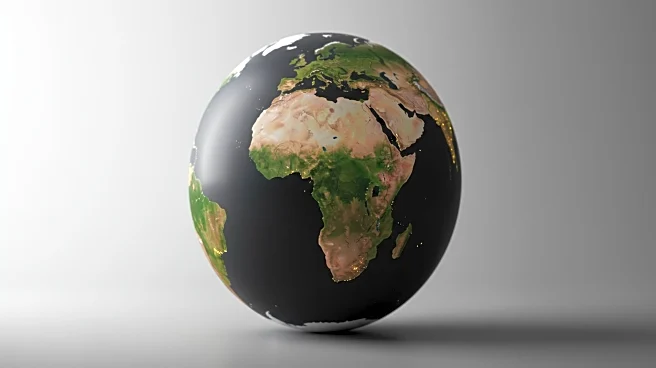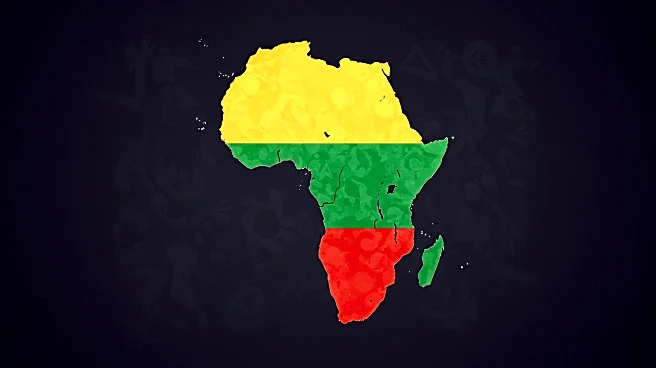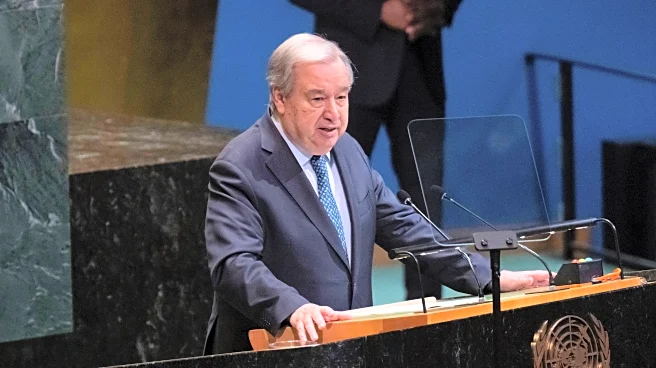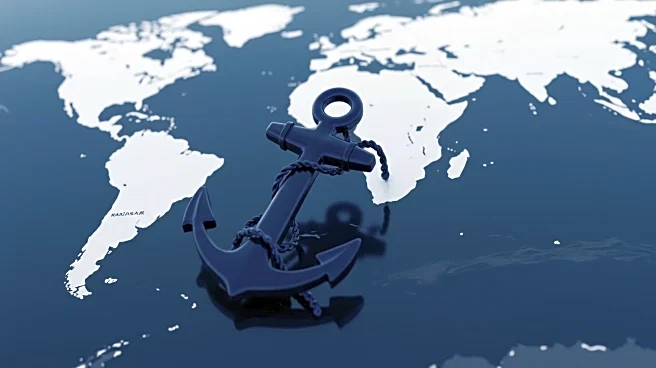Rapid Read • 9 min read
The African Union (AU) has endorsed a campaign to discontinue the use of the Mercator map projection, which has been criticized for distorting the size of continents, particularly Africa. The Mercator map, created in the 16th century by Gerardus Mercator, is known for enlarging regions near the poles, such as North America and Greenland, while diminishing the size of Africa and South America. Selma Malika Haddadi, the African Union Commission deputy chair, emphasized that the map perpetuates a false perception of Africa as marginal, despite it being the second-largest continent by area and home to over a billion people. The campaign, led by advocacy groups Africa No Filter and Speak Up Africa, promotes the adoption of the 2018 Equal Earth projection, which aims to more accurately represent the true sizes of countries. The AU's support aligns with its broader goal of reclaiming Africa's rightful place on the global stage.
AD
The push to replace the Mercator map with a more accurate representation like the Equal Earth projection has significant implications for education, media, and policy. The Mercator map's distortion has long contributed to a skewed perception of Africa's size and importance, potentially affecting the continent's identity and pride, especially among children. By advocating for a map that accurately reflects Africa's true size, the AU aims to challenge longstanding stereotypes and misinformation. This move could influence global institutions, including those based in Africa, to adopt more accurate cartographic standards, thereby fostering a more equitable global perspective. The campaign also ties into broader discussions about reparations for colonialism and slavery, as it seeks to address historical misrepresentations and their ongoing impact.
The African Union plans to advocate for the wider adoption of the Equal Earth map and will discuss collective actions with its member states. The campaign has already reached out to major organizations like the World Bank and the United Nations to encourage them to switch to the Equal Earth projection. The World Bank has indicated it is phasing out the Mercator projection for web maps, while the UN is reviewing the request. The AU's efforts are also supported by other regions, such as the Caribbean Community Reparations Commission, which views the adoption of the Equal Earth map as a rejection of the Mercator map's ideology of power and dominance.
The campaign to replace the Mercator map with the Equal Earth projection highlights deeper issues of representation and power dynamics in global cartography. The Mercator map has historically been used as a tool of colonial dominance, reinforcing a Eurocentric worldview. By advocating for a more accurate map, the AU and its allies are challenging these historical narratives and promoting a more balanced view of the world. This shift could have long-term cultural and educational impacts, fostering a greater sense of identity and pride among African populations and encouraging a more nuanced understanding of global geography.
AD
More Stories You Might Enjoy












